#India Sri Lanka UN
Explore tagged Tumblr posts
Text
Desi Parenthood, Adoption, and Stereotypes
I have a story set in the modern day with supernatural traces, with three characters: a young boy, his bio dad, and his adoptive dad. The boy and his bio dad are Indian, the adoptive dad is Chinese. The bio dad is one of the few people in the story with powers. He put his son up for adoption when he was a child because at the time he was a young single father, had little control of the strength of his powers: he feared accidentally hurting his child. The son is adopted by the other dad, who holds spite to the bio dad for giving up his son since he lost his father as a young age and couldn't get why someone would willingly abandon their child. This also results in him being overprotective and strict over his son. When the child is older, the bio dad comes to their town and the son gets closer to him, which makes the adoptive dad pissed, mostly acting hostile to the other guy, paranoid that he'll decide to take away the child he didn't help raise. Later when they get closer he does change his biases. I can see the possible stereotypes here: the absent father being the darkskinned character, the light-skinned adoptive dad being richer than the bio dad, the lightskinned character being hostile and looking down on the darkskinned character, the overprotective asian parent, the adoptive dad assuming the bio dad abandoned the son. The reason for his bias isn't inherently racist, but I get how it can be seen that way. Is there a way to make this work? Would it be better to scrap it?
Two problem areas stand out with this ask:
You seem confused with respect to how racial stereotypes are created, and what effect they have on society.
Your characterization of the Indian father suggests a lack of familiarity with many desi cultures as they pertain to family and child-rearing.
Racial Stereotypes are Specific
Your concern seems to stem from believing the absent father trope is applied to all dark-skinned individuals, when it’s really only applied to a subset of dark-skinned people for specific historical/ social/ political reasons. The reality is stereotypes are often targeted.
The “absent father” stereotype is often applied to Black fathers, particularly in countries where chattel slavery or colonialism meant that many Black fathers were separated from their children, often by force. The "absent black father" trope today serves to enforce anti-black notions of Black men as anti-social, neglectful of their responsibilities, not nurturing, etc. Please see the WWC tag #absent black father for further reading.
Now, it’s true many desis have dark skin. There are also Black desis. I would go as far as to say despite anti-black bias and colorism in many desi cultures, if one was asked to tell many non-Black desis from places like S. India and Sri Lanka apart from Black people from places like E. Africa, the rate of failure would be quite high. However, negative stereotypes for desi fathers are not the same as negative stereotypes for non-desi Black fathers, because racially, most Black people and desis are often not perceived as being part of the same racial group by other racial groups, particularly white majorities in Western countries. Negative stereotypes for desi fathers are often things like: uncaring, socially regressive/ conservative, sexist. They are more focused around narratives that portray these men as at odds with Western culture and Western norms of parenting.
Desi Parents are Not this Way
Secondly, the setup makes little sense given how actual desi families tend to operate when one or both parents are unable to be present for whatever reason. Children are often sent to be raised by grandparents, available relatives or boarding schools (Family resources permitting). Having children be raised by an outsider is a move of last resort. You make no mention of why your protagonist’s father didn’t choose such an option. The trope of many desi family networks being incredibly large is not unfounded. Why was extended family not an option?
These two points trouble me because you have told us you are writing a story involving relationship dynamics between characters of both different races and ethnicities. I’m worried you don’t know enough about the groups you are writing about, how they are perceived by each other and society at large in order to tell the story you want to tell.
As with many instances of writing with color, your problem is not an issue of scrap versus don’t scrap. It’s being cognizant of the current limits of your knowledge. How you address this knowledge deficit and its effect on your interpretation of your characters and the story overall will determine if readers from the portrayed groups find the story compelling.
- Marika.
I have one response: what? Where are the father’s parents? Any siblings? Is he cut off? Is he American? A Desi that has stayed in India?
Estrangement is not completely out of the question if the father is Westernized; goodness knows that I have personal experience with seeing estrangement. But you haven’t established any of that. What will you add?
-Jaya
#Black#Indian#South Asian#Desi#absent black father#stereotypes#tropes#adoption#colorism#research research research#parenting#strict Asian parents#Asian families
729 notes
·
View notes
Note
Recordé que hablamos sobre los viajes de Wukong por el mundo ocurrió una anécdota divertida sobre un rey griego en los años 20 XD. Dicho rey estaba paseando a su perro por los jardines y el perro fue a atacar un mono bien cuidado y después apareció otro mono a defenderlo!! Y el rey fue a sacar al perro de los monos y uno de ellos lo termino mordiendo y el rey se murió con la herida infectada!!!
¿Ahora como lo asociamos con el rey mono? Pues el rey estaba ahí tranquilo en un glamour de mono común y vio a este perro atacar a otro mono aparentemente común... Y fue a ayudarlo, obviamente con el glamour era solo un perro normal (SIMIO AYUDA SIMIO)
Y cuando se escaparon se quitaron los glamours y el otro mono demonio le agradece por su ayuda y se fueron por caminos se parados y una prohibición de por vida por Zeus por la muerte del rey en tierras griegas... (Bueno Hades meteria a Wukong de contrabando para ser mierdas con su hermanito)
Wukong: Ahora el otro mono probablemente este en algún lugar de la India o Sri Lanka... ¿O era Tailandia? No se, hace tiempo perdimos contacto...
Estuve viendo buscando sobre monos místicos para ver la poblacion de estos aparentemente la mayoría de esto es Hindú o Chino, y hay mitos sobre uno en Egipto o Costa Rica por lo que también se extiende la población por África o América principalmente en junglas (Por lo que ellos estarían completamente aislados o semi asilados de la civilización moderna)
translation by Google:
"I remembered that we talked about Wukong's travels around the world and a funny anecdote happened about a Greek king in the 20s XD. Said king was walking his dog in the gardens and the dog went to attack a well-kept monkey and then another monkey appeared to defend it!! And the king went to get the dog away from the monkeys and one of them ended up biting him and the king died with the infected wound!!! Now how do we associate him with the monkey king? Well the king was there calmly in a common monkey glamour and saw this dog attack another apparently common monkey… And he went to help him, obviously with the glamour it was just a normal dog (APE HELP APE) And when they escaped they took off their glamours and the other demon monkey thanks him for his help and they went their separate ways and a lifelong ban by Zeus for the death of the king in Greek lands… (Well Hades would smuggle Wukong in to be shitty with his little brother) Wukong: Now the other monkey is probably somewhere in India or Sri Lanka… Or was it Thailand? I don't know, we lost contact a long time ago… I was looking up about mystical monkeys to see the population of these, apparently most of these are Hindu or Chinese, and there are myths about one in Egypt or Costa Rica so the population also extends through Africa or America mainly in jungles (So they would be completely isolated or semi isolated from modern civilization)"
oh yes I remember we joked about this! XD
For those who do not know; in 1920, the King Alexander of Greece was out walking his dog when his dog attacked a macaque monkey. A second macaque came to the first monkey's defence, and the King was bitten in the confusion. The King would later die of an infection caused by the monkey bite. The confusion caused by the loss of the King set up the dominos for the Greek monarchy to fall during WW2.
So we joked that Sun Wukong was the second monkey who jumped in to protect the first (actually a fellow monkey demon wearing a glamour). And since the incident led to the death of a royal - Wukong now has a lifetime ban from Greece via the Greco-Roman Gods XD
16 notes
·
View notes
Text
News Post
Palestine
Palestine is a glimpse of the dystopic future that awaits us | Israel-Palestine conflict | Al Jazeera
IDF operates in central Gaza Strip - Palestinian report - The Jerusalem Post (jpost.com)
Ussama Makdisi, Overwriting Palestine — Sidecar (newleftreview.org)
Iran’s response to Israel looms. What are the possible scenarios? | Israel-Palestine conflict News | Al Jazeera
Ukraine
Russia asked US to convince Ukraine not to attack it on Russia's Navy Day – media – photo | Ukrainska Pravda
Ukraine Was Poised to Destroy Russia’s Best Warplanes, but White House Restrictions Shut Their Window of Opportunity (kyivpost.com)
Russia suspected Ukrainian attack on Navy Day parade, state TV says (yahoo.com)
Ukraine's defence forces shoot down Russian helicopter over Sumy Oblast | Ukrainska Pravda
Sudan
Sudan mandates sorghum planting to avert famine as conflict disrupts agriculture - Sudan Tribune
UN Appeals for Security Council Help to Combat Famine in Sudan (usnews.com)
Why are Sudan’s warring sides blocking humanitarian aid? | Humanitarian Crises | Al Jazeera
At least 32 killed, 107 wounded due to heavy rains, floods in Sudan-Xinhua (news.cn)
Other
Biden speaks to leaders of Qatar, Egypt on regional tensions, ceasefire (yahoo.com)
Congolese police officers flee to Uganda as fighting intensifies - The East African
Africa is heading toward another deadly war - The Japan Times
Afghanistan, Pakistan, Sri Lanka and now Bangladesh: What's going on in India's neighbourhood? - Times of India (indiatimes.com)
The Taliban says people in Afghanistan on previous government's visas can stay for now | AP News
At least 13 killed and 300 evacuated after deadly landslide in southern Ethiopia (voanews.com)
Min Aung Hlaing admits pressure after Myanmar anti-coup forces claim base | Conflict News | Al Jazeera
Pentagon Hands Over Last Base in Niger as Extremism Spreads in the Sahel - The New York Times (nytimes.com)
Arson Attacks on Schools in the Sahel: Addressing the Issue through Prevention, Mitigation and Effective Response, July 2024 - Niger | ReliefWeb
#News Post#Palestine#Gaza#Free Palestine#Free Gaza#Justice for Palestine#Long Live Palestine#Ukraine#Save Ukraine#Keep Fighting For Ukraine#Victory to Ukraine#Sudan#Dafur#El Fasher#Save Sudan#Sudan Civil War#Sudan Genocide#Egypt#Congo#Afghanistan#Ethiopia#Myanmar#Sahel
10 notes
·
View notes
Photo

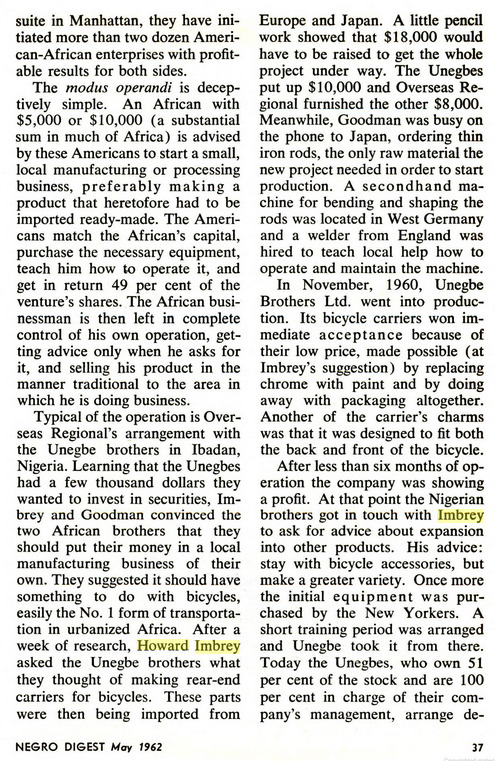


Part 1 in this series about... something. I’ll figure it out when I write more.
Howard Imbrey was a CIA agent. Having started in the CIA’s WW2 predecessor, the OSS, he was placed undercover in diplomatic roles at American consulates and embassies in Sri Lanka, India, and Ethiopia during the late 40s and 50s. This was a traditional role for intelligence agents: with diplomatic immunity, they would be safe from prosecution, while embassy parties and other events allowed them to pick up gossip from inside the country.
However, it did limit agents and paint a large target on their back. Imbrey operated in a friendly environment in India, where he could rely on British-trained police chiefs as informants in the battle against the Communist Party of India in Maharashtra and Kerala. In other parts of the world, governments would monitor the movements and activities of those who came out of the American embassy, knowing them to be spies.
In 1958, Imbrey was instead embedded in a fake corporation headquartered near the UN in NYC, with a real businessman as his partner. They worked closely with UN diplomats to find actual businesses to promote, to keep the whole thing legit. At the same time, it allowed Imbrey the chance to question the diplomats and businessmen for gossip and to meet with other informants the CIA had already cultivated across the continent. Some of these informants included Cyrille Adoula and Albert Kalonji, head of political parties and breakaway factions devoted to undermining Patrice Lumumba’s elected government in the Congo.
The article attached was important to developing his cover. Initially, it ran in Fortune, owned at the time by Henry Luce’s Time Inc., while the screenshots are from John H. Johnson’s Negro Digest. Luce was historically close to the CIA and the American government in general. He hired CIA agents onto his staff and allowed them to write propaganda as they saw fit. He directed his journalists to publish opinion pieces attacking those who exposed CIA secrets, like Ramparts magazine. At one point in the Congo Crisis, US Ambassador to Belgium William Burden, a friend of Luce’s, phoned him to get him to bury a story on Lumumba. No information has come out either way on just whether the journalist who wrote this article knew Imbrey was CIA or was simply ordered to by higher ups, but it seems likely that the editorial staff of Negro Digest simply saw it as fitting with their focus on black lives and reprinted it unwittingly to the CIA’s benefit. Later on, Imbrey would find another cover as a journalist with a CIA-controlled news outlet in Paris, Brussels, and Rome, which allowed the CIA to fly informants to him.
None of this was known to anyone until 2001, save for a brief acknowledgement of thanks to Imbrey’s wife in a book by Larry Devlin, CIA Station Chief in the Congo. That year, Imbrey suddenly gave two interviews in April and June, and then died a year later. One was to a high school student at a private Episcopal school in Maryland. It’s roughly written, and clearly transcribed by someone who’s writing the names of Congolese officials by ear rather than knowledge, but deserves to be read, not because Imbrey lets his guard down consciously, but rather because of the implicit biases he still has and the distinction between the secrets he wishes to keep and those he feels fine in revealing. Particularly humorous is when the kid tries to ask him about whether the CIA operated independently from the president, and Imbrey denies it, saying “That’s an Arab type of operation.”
The other was to Charles Stuart Kennedy, a career diplomat who retired in the 80s and subsequently made a post-retirement life of interviewing other diplomats for the public record. Since many CIA employees were embedded as diplomats, he ended up running into a bunch. His interview is much more detailed and professional, albeit with the same transcription errors on names, and makes for excellent reading for anybody who enjoys salacious historical gossip. Imbrey talks about reading Popeye the Sailor bootleg Rule 34 as a kid, kidnapping fishermen in the Indian Ocean with submarines to train them to use radios to spy on the Japanese Navy (sounds like UFO abductions), supplying porn to the higher ups in the Indian Navy, etc. But two particular moments stand out, one being what may be the single worst denial of American involvement in the assassination of Patrice Lumumba:
Q: Did you get involved at all with the Lumumba business?
IMBREY: No, the only thing I can tell you is they sent out this shellfish compound to chief of station Larry Devlin and he sent it back with an angry note saying, “Don't you know the Belgians are going to kill him, what do you want us to do?” We kept totally out of that one. Then Lumumba really put himself in terrible trouble when he gave a rise of one rank to everybody in the army and then found he couldn't pay the new prices. Then the army rebelled; they put him in an airplane, took him south and they pulled him out of the airplane on the driveway, brought him up to the chief of the Lunda tribe and in Munongo's office and I guess they shot him there or it may not have been there. In Munongo's office they began asking him a couple of questions. Well, this was according to his answers. Munongo took a bayonet and put it right into Lumumba's chest and Captain Gatt, a Belgian, was right there and he fired a bullet in the back of Lumumba's head to put him out of his misery and that was how it happened, but no Americans were involved.
and whatever this is, which happens to coincide with the CIA’s MHCHAOS operation on American soil:
Q: When you came home what were you doing?
IMBREY: That's where we turn off the tape recorder.
Q: All right, well then, we'll just skip over that. When did you take off again where we can talk?
IMBREY: Let's see. I was sent back to Rome in '72. Turn it off for a while and I'll tell you about it.
47 notes
·
View notes
Text
Holidays 10.10
Holidays
Adult Human Female Day
Arbor Day (Poland)
Army Day (Sri Lanka)
Bonza Bottler Day
Canning Day (Japan)
Capital Liberation Day (Vietnam)
Commonwealth Culture Day (Northern Mariana Islands)
Curaçao Day (Curaçao)
DAF Day
Dashawn Festival (Nepal)
Day of Action Against Mercury Pollution (Peru)
Day of Finnish Literature (Finland)
Day of Sustainability (Netherlands)
Double Ten Day (Taiwan)
Dove Day (Canada)
Earth Observation Day
European Day for Organ Donation and Transportation (EU)
European Fragile X Awareness Day
Eye Protection Day (Japan)
Falak Day (Tajikistan)
Feast of Chains of Transmission
Fiji Day (Fiji)
Fishing Day (Japan)
Fleetwood Mac Day (L.A., California)
Ganging Day (UK)
Geniculate Neuralgia Awareness Day
Global Jamstack Day
Happiness to Humans Day
Heroes’ Day (Orania, South Africa)
Horning the Colt (Old England)
Huduma Day (Kenya)
Hug a Drummer Day
Hull Fair begins (Hull, England)
International Jumping Spider Day
International Stage Management Day
International Walk to School/Bike to School Day
Island Day (Japan)
Journee Nationale de la Femme Marocaine (National Women’s Day; Morocco)
Kivi Day (a.k.a. Finnish Literature Day)
Kruger Day (South Africa)
Local Government Day (Philippines)
Love Your Eyes Day (Japan)
Malampa Day (Vanuatu)
Manzingira Day (Kenya)
Maroons Day (Suriname)
Moi Day (Kenya)
Motorsports Memorial Day
National Day (Taiwan)
National Depression Screening Day
National Handbag Day
National Heritage Day (Turks and Caicos Islands)
National Hug-a-Kevin Day
National Love Your Hair Day
National Metric Day
National Officials Day
National Paint a Blue Tree Day (Australia)
National Philately Day (India)
National Porter Day
National Real Men Wear Pink Day
National SHIFT10 Day
National Tic Tac Day
National Trumpet Day
National Walk to a Park Day
Naval Academy Day (US)
No Child Left Outside Day
Okonomiyaki Day (Japan)
Outer Space Treaty Day
Party Foundation Day (North Korea)
Patti Smith Day (Boston, Massachusetts)
Powers of Ten Day
Progressive Rock Day
Public Bath Day (Japan)
Referendum Day (Austria)
Squidturday (a.k.a. Squid and Cuttlefish Day)
Standardization and Metology Employees Day (Ukraine)
Sunflower Day (French Republic)
Tag der Volksabstimmung (Referendum Day; Austria)
Tau Epsilon Phi Founders Day
Thomas Traherne Day (Anglican)
Trade Union Day Kazakhstan)
Tuxedo Day
Utamaduni Day (Kenya)
Virgin Islands-Puerto Rico Friendship Day
World Animal Road Accident Awareness Day
World Audiologists Day
World Day Against the Death Penalty
World Homeless Day
World Inclusion Day
World Mental Health Day (UN)
World Pickleball Day
Worldwide XX Day
Food & Drink Celebrations
Angel Food Cake Day
Ham & Cheese Croissant Day
Mochi Day (Japan)
National Black Brewers Day (L.A.)
National Cake Decorating Day
National Red Solo Cup Day
Okonomiyaki Day (Japan)
Tuna Day (Japan)
World Plant-Based Burger Day
World Porridge Day
Independence & Related Days
China (Wuchang Uprising; 1911)
Cuba (from Spain, 1868)
Fiji (from UK, 1970)
North Korea (KWP Foundation Day; 1945)
Lazonesia (Declared; 2020) [unrecognized]
New Custosia (Declared; 2016) [unrecognized]
Republic of Alba (Declared; 1944) [Conquered 11.2.1844]
Saba (from the Netherlands, 2010)
2nd Thursday in October
Children’s Environmental Health Day [2nd Thursday]
Day of Children’s Hospice Work (Germany) [2nd Thursday]
Great Lakes Great Apple Crunch [2nd Thursday]
International RSE Day [2nd Thursday]
National Children’s Hospice Palliative Care Day (Canada) [2nd Thursday]
National Dessert Day [2nd Thursday] (also 10.14)
National Student Day [2nd Thursday]
Ombuds Day [2nd Thursday]
Thirsty Thursday [Every Thursday]
Thoughtful Thursday [2nd Thursday of Each Month]
Three for Thursday [Every Thursday]
Thrift Store Thursday [Every Thursday]
Throwback Thursday [Every Thursday]
Toast Thursday [2nd Thursday of Each Month]
World Chicken Day [2nd Thursday]
World Sight Day [2nd Thursday]
Weekly Holidays beginning October 10 (1st Full Week of October)
Death Penalty Focus Week (thru 10.12) [Week including 10.10.]
Take Your Medicine Americans Week (thru 10.17)
Festivals Beginning October 10, 2024
Fennville Goose Festival (Fennville, Michigan) [thru 10.13]
Great American Beer Festival (Denver, Colorado) [thru 10.12]
The Great Pumpkin Parade (New Bedford, Massachusetts)
Groves Pecan Festival (Groves, Texas) [thru 10.13]
Gruene Music & Wine Festival (New Braunfels, Texas)
National Shrimp Festival (Gulf Shores, Alabama) [thru 10.13]
Suffolk Peanut Festival (Suffolk, Virginia) [thru 10.13]
West Virginia Black Walnut Festival (Spencer, West Virginia) [thru 10.13]
The WhiskyX (Los Angeles, California)
Yemassee Shrimp Festival (Yemassee, South Carolina) [thru 10.12]
Zwolle Tamale Fiesta (Zwolle, Louisiana) [thru 10.12]
Feast Days
Aequinoctium Autumnale V (Pagan)
Alberto Giacometti (Artology)
Angela Truszkowska (Christian; Blessed)
Antoine Watteau (Artology)
Celebration of the Squeezed Nipple (Shamanism)
Cerbonius (Christian; Saint)
Chris Ofili (Artology)
Claude Simon (Writerism)
Crystal Gazing Day (Starza Pagan Book of Days)
Daniel Comboni (Christian; Saint)
Dildo Day (Pastafarian)
Etain (Celtic Book of Days)
Eulampius and Eulampia (Christian; Saint)
Festival for Juno Moneta (Ancient Rome)
Festival of Light (Brazil; Everyday Wicca)
Fiona Rae (Artology)
Francis Borgia (Christian; Saint)
Gereon and companions (Christian; Saints)
Han van Meegeren (Artology)
Harold Pinter (Writerism)
James Clavell (Writerism)
John of Bridlington (Christian; Saint)
Lambert-Sigisbert Adam (Artology)
Madeline Murray O’Hair Day (Church of the SubGenius; Saint)
Maurice Prendergast (Artology)
María Catalina Irigoyen Echegaray (Maria Desposorios; Christian; Blessed)
Nicolas de Largillière (Artology)
Paulinus of York (in England; Christian; Saint)
Pinytus (Christian; Saint)
Rankin Frackle (Muppetism)
Rub Things On Your Lover Day (Pastafarian)
Rumiko Takahashi (Artology)
St. Bonaventura (Positivist; Saint)
Tanca (Christian; Saint)
Vida Dutton Scudder (Episcopal Church)
Viktor of Xanten (Christian; Saint)
Warai Matsuri (Laughing Festival; Japan)
Lucky & Unlucky Days
Binary Day [1010] (5 of 9)
Butsumetsu (仏滅 Japan) [Unlucky all day.]
Fatal Day (Pagan) [20 of 24]
Prime Number Day: 283 [61 of 72]
Premieres
The Amber Spyglass, by Philip Pullman (Novel; 2000) [His Dark Materials #3]
Arrow (TV Series; 2012)
Atlas Shrugged, by Ayn Rand (Propaganda Fiction; 1957)
The Barnyard Battle (Disney Cartoon; 1929)
The Barnyard Broadcast (Disney Cartoon; 1931)
Boogie Nights (Film; 1997)
Boulevardier from the Bronx (WB MM Cartoon; 1936)
The Brave and the Boulder or To Each His Stone (Rocky & Bullwinkle Cartoon, S3, Ep. 116; 1961)
Carnival Capers (Oswald the Lucky Rabbit; 1932)
Clockwise (Film; 1986)
Come Taste the Band, by Deep Purple (Album; 1975)
Comfort and Joy (Film; 1984)
Death at the President's Lodging, by Michael Innes (Novel; 1936) [Inspector Appleby #1]
The Duchess (Film; 2008)
The Female Eunuch, by Germaine Greer (Women’s History; 1970)
Fine Feathered Friend (Tom & Jerry Cartoon; 1942)
The First Snow (Mighty Mouse Cartoon; 1947)
From Russia with Love (London Film Premiere; 1963) [James Bond #2]
Giant (Film; 1956)
The Gorilla Mystery (Disney Cartoon; 1930)
The Guide, by R.K. Narayan (Novel; 1958)
Hot Rats, by Frank Zappa (Album; 1969)
In Rainbows, by Radiohead (Album; 2007)
In the Court of the Crimson King, by King Crimson (Album; 1969)
Jesus Christ Superstar (Soundtrack Recorded; 1969)
Kagemusha (Film; 1980)
Kill Bill: Vol. 1 (Film; 2003)
Leader of the Pack, by the Shangri-Las (Song; 1964)
Mickey’s Elephant (Disney Cartoon; 1936)
The Monkees, by The Monkees (Album; 1966)
Naughty but Mice (Noveltoons Cartoon; 1947)
Never Give a Sucker an Even Break (Film; 1941)
Once Upon a Time in Wonderland (TV Series; 2013)
Patience, by Gilbert & Sullivan (Comic Opera; 1881)
Peggy Sue Got Married (Film; 1986)
Private Benjamin (Film; 1980)
Simon Says (Underdog Cartoon, S1, Ep. 3; 1964)
Songs from the Labyrinth, by Sting (Album; 2006)
Spook-a-Nanny (Woody Woodpecker Cartoon; 1964)
St. George and the Dragonet, by Stan Freberg (Song; 1953)
St. Vincent (Film; 2014)
The San Blasters or Big Bang on the Beach (Rocky & Bullwinkle Cartoon, S3, Ep. 115; 1961)
Tragic Kingdom, by No Doubt (Album; 1995)
Trick or Treat (Disney Cartoon; 1952)
Tricky Trap by TapTap (Underdog Cartoon, S1, Ep. 4; 1964)
True Stories (Film; 1986)
Video Games, by Lana Del Rey (Song; 2011)
Washington Square (Film; 1997)
Whiplash (Film; 2014)
Wild About Hurry (WB MM Cartoon; 1959)
Winter's Tales, by Isak Dinesen (Novel; 1942)
Today’s Name Days
Gereon, Samuel, Viktor (Austria)
Danijel, Danko, Hugolin, Samuel, Viktor (Croatia)
Marina (Czech Republic)
Gereon (Denmark)
Karmo, Varmo, Võso (Estonia)
Aleksi, Aleksis (Finland)
Ghislain, Virgile (France)
Gereon, Samuel, Valerie, Viktor (Germany)
Evlambios (Greece)
Gedeon (Hungary)
Daniele (Italy)
Arveds, Arvīds, Arvis, Druvis, Vigo (Latvia)
Butautė, Danielius, Gilvydas (Lithuania)
Frida, Fridtjof, Frits (Norway)
Franciszek, German, Kalistrat, Lutomir, Paulin, Tomił (Poland)
Ambrozie, Evlampia, Evlampie (România)
Slavomíra (Slovakia)
Tomás (Spain)
Harriet, Harry (Sweden)
Dan, Dana, Dane, Danica, Daniel, Daniela, Daniella, Danielle, Danny (USA)
Today is Also…
Day of Year: Day 284 of 2024; 82 days remaining in the year
ISO: Day 4 of Week 41 of 2024
Celtic Tree Calendar: Gort (Ivy) [Day 12 of 28]
Chinese: Month 9 (Jia-Xu), Day 8 (Ding-Wei)
Chinese Year of the: Dragon 4722 (until January 29, 2025) [Wu-Chen]
Hebrew: 8 Tishri 5785
Islamic: 6 Rabi II 1446
J Cal: 14 Orange; Seventhday [14 of 30]
Julian: 27 September 2024
Moon: 50%: 1st Quarter
Positivist: 4 Descartes (11th Month) [Cardinal of Cusa / Ramus]
Runic Half Month: Gyfu (Gift) [Day 4 of 15]
Season: Autumn or Fall (Day 19 of 90)
Week: 1st Full Week of October
Zodiac: Libra (Day 18 of 30)
2 notes
·
View notes
Text
Holidays 10.10
Holidays
Adult Human Female Day
Arbor Day (Poland)
Army Day (Sri Lanka)
Bonza Bottler Day
Canning Day (Japan)
Capital Liberation Day (Vietnam)
Commonwealth Culture Day (Northern Mariana Islands)
Curaçao Day (Curaçao)
DAF Day
Dashawn Festival (Nepal)
Day of Action Against Mercury Pollution (Peru)
Day of Finnish Literature (Finland)
Day of Sustainability (Netherlands)
Double Ten Day (Taiwan)
Dove Day (Canada)
Earth Observation Day
European Day for Organ Donation and Transportation (EU)
European Fragile X Awareness Day
Eye Protection Day (Japan)
Falak Day (Tajikistan)
Feast of Chains of Transmission
Fiji Day (Fiji)
Fishing Day (Japan)
Fleetwood Mac Day (L.A., California)
Ganging Day (UK)
Geniculate Neuralgia Awareness Day
Global Jamstack Day
Happiness to Humans Day
Heroes’ Day (Orania, South Africa)
Horning the Colt (Old England)
Huduma Day (Kenya)
Hug a Drummer Day
Hull Fair begins (Hull, England)
International Jumping Spider Day
International Stage Management Day
International Walk to School/Bike to School Day
Island Day (Japan)
Journee Nationale de la Femme Marocaine (National Women’s Day; Morocco)
Kivi Day (a.k.a. Finnish Literature Day)
Kruger Day (South Africa)
Local Government Day (Philippines)
Love Your Eyes Day (Japan)
Malampa Day (Vanuatu)
Manzingira Day (Kenya)
Maroons Day (Suriname)
Moi Day (Kenya)
Motorsports Memorial Day
National Day (Taiwan)
National Depression Screening Day
National Handbag Day
National Heritage Day (Turks and Caicos Islands)
National Hug-a-Kevin Day
National Love Your Hair Day
National Metric Day
National Officials Day
National Paint a Blue Tree Day (Australia)
National Philately Day (India)
National Porter Day
National Real Men Wear Pink Day
National SHIFT10 Day
National Tic Tac Day
National Trumpet Day
National Walk to a Park Day
Naval Academy Day (US)
No Child Left Outside Day
Okonomiyaki Day (Japan)
Outer Space Treaty Day
Party Foundation Day (North Korea)
Patti Smith Day (Boston, Massachusetts)
Powers of Ten Day
Progressive Rock Day
Public Bath Day (Japan)
Referendum Day (Austria)
Squidturday (a.k.a. Squid and Cuttlefish Day)
Standardization and Metology Employees Day (Ukraine)
Sunflower Day (French Republic)
Tag der Volksabstimmung (Referendum Day; Austria)
Tau Epsilon Phi Founders Day
Thomas Traherne Day (Anglican)
Trade Union Day Kazakhstan)
Tuxedo Day
Utamaduni Day (Kenya)
Virgin Islands-Puerto Rico Friendship Day
World Animal Road Accident Awareness Day
World Audiologists Day
World Day Against the Death Penalty
World Homeless Day
World Inclusion Day
World Mental Health Day (UN)
World Pickleball Day
Worldwide XX Day
Food & Drink Celebrations
Angel Food Cake Day
Ham & Cheese Croissant Day
Mochi Day (Japan)
National Black Brewers Day (L.A.)
National Cake Decorating Day
National Red Solo Cup Day
Okonomiyaki Day (Japan)
Tuna Day (Japan)
World Plant-Based Burger Day
World Porridge Day
Independence & Related Days
China (Wuchang Uprising; 1911)
Cuba (from Spain, 1868)
Fiji (from UK, 1970)
North Korea (KWP Foundation Day; 1945)
Lazonesia (Declared; 2020) [unrecognized]
New Custosia (Declared; 2016) [unrecognized]
Republic of Alba (Declared; 1944) [Conquered 11.2.1844]
Saba (from the Netherlands, 2010)
2nd Thursday in October
Children’s Environmental Health Day [2nd Thursday]
Day of Children’s Hospice Work (Germany) [2nd Thursday]
Great Lakes Great Apple Crunch [2nd Thursday]
International RSE Day [2nd Thursday]
National Children’s Hospice Palliative Care Day (Canada) [2nd Thursday]
National Dessert Day [2nd Thursday] (also 10.14)
National Student Day [2nd Thursday]
Ombuds Day [2nd Thursday]
Thirsty Thursday [Every Thursday]
Thoughtful Thursday [2nd Thursday of Each Month]
Three for Thursday [Every Thursday]
Thrift Store Thursday [Every Thursday]
Throwback Thursday [Every Thursday]
Toast Thursday [2nd Thursday of Each Month]
World Chicken Day [2nd Thursday]
World Sight Day [2nd Thursday]
Weekly Holidays beginning October 10 (1st Full Week of October)
Death Penalty Focus Week (thru 10.12) [Week including 10.10.]
Take Your Medicine Americans Week (thru 10.17)
Festivals Beginning October 10, 2024
Fennville Goose Festival (Fennville, Michigan) [thru 10.13]
Great American Beer Festival (Denver, Colorado) [thru 10.12]
The Great Pumpkin Parade (New Bedford, Massachusetts)
Groves Pecan Festival (Groves, Texas) [thru 10.13]
Gruene Music & Wine Festival (New Braunfels, Texas)
National Shrimp Festival (Gulf Shores, Alabama) [thru 10.13]
Suffolk Peanut Festival (Suffolk, Virginia) [thru 10.13]
West Virginia Black Walnut Festival (Spencer, West Virginia) [thru 10.13]
The WhiskyX (Los Angeles, California)
Yemassee Shrimp Festival (Yemassee, South Carolina) [thru 10.12]
Zwolle Tamale Fiesta (Zwolle, Louisiana) [thru 10.12]
Feast Days
Aequinoctium Autumnale V (Pagan)
Alberto Giacometti (Artology)
Angela Truszkowska (Christian; Blessed)
Antoine Watteau (Artology)
Celebration of the Squeezed Nipple (Shamanism)
Cerbonius (Christian; Saint)
Chris Ofili (Artology)
Claude Simon (Writerism)
Crystal Gazing Day (Starza Pagan Book of Days)
Daniel Comboni (Christian; Saint)
Dildo Day (Pastafarian)
Etain (Celtic Book of Days)
Eulampius and Eulampia (Christian; Saint)
Festival for Juno Moneta (Ancient Rome)
Festival of Light (Brazil; Everyday Wicca)
Fiona Rae (Artology)
Francis Borgia (Christian; Saint)
Gereon and companions (Christian; Saints)
Han van Meegeren (Artology)
Harold Pinter (Writerism)
James Clavell (Writerism)
John of Bridlington (Christian; Saint)
Lambert-Sigisbert Adam (Artology)
Madeline Murray O’Hair Day (Church of the SubGenius; Saint)
Maurice Prendergast (Artology)
María Catalina Irigoyen Echegaray (Maria Desposorios; Christian; Blessed)
Nicolas de Largillière (Artology)
Paulinus of York (in England; Christian; Saint)
Pinytus (Christian; Saint)
Rankin Frackle (Muppetism)
Rub Things On Your Lover Day (Pastafarian)
Rumiko Takahashi (Artology)
St. Bonaventura (Positivist; Saint)
Tanca (Christian; Saint)
Vida Dutton Scudder (Episcopal Church)
Viktor of Xanten (Christian; Saint)
Warai Matsuri (Laughing Festival; Japan)
Lucky & Unlucky Days
Binary Day [1010] (5 of 9)
Butsumetsu (仏滅 Japan) [Unlucky all day.]
Fatal Day (Pagan) [20 of 24]
Prime Number Day: 283 [61 of 72]
Premieres
The Amber Spyglass, by Philip Pullman (Novel; 2000) [His Dark Materials #3]
Arrow (TV Series; 2012)
Atlas Shrugged, by Ayn Rand (Propaganda Fiction; 1957)
The Barnyard Battle (Disney Cartoon; 1929)
The Barnyard Broadcast (Disney Cartoon; 1931)
Boogie Nights (Film; 1997)
Boulevardier from the Bronx (WB MM Cartoon; 1936)
The Brave and the Boulder or To Each His Stone (Rocky & Bullwinkle Cartoon, S3, Ep. 116; 1961)
Carnival Capers (Oswald the Lucky Rabbit; 1932)
Clockwise (Film; 1986)
Come Taste the Band, by Deep Purple (Album; 1975)
Comfort and Joy (Film; 1984)
Death at the President's Lodging, by Michael Innes (Novel; 1936) [Inspector Appleby #1]
The Duchess (Film; 2008)
The Female Eunuch, by Germaine Greer (Women’s History; 1970)
Fine Feathered Friend (Tom & Jerry Cartoon; 1942)
The First Snow (Mighty Mouse Cartoon; 1947)
From Russia with Love (London Film Premiere; 1963) [James Bond #2]
Giant (Film; 1956)
The Gorilla Mystery (Disney Cartoon; 1930)
The Guide, by R.K. Narayan (Novel; 1958)
Hot Rats, by Frank Zappa (Album; 1969)
In Rainbows, by Radiohead (Album; 2007)
In the Court of the Crimson King, by King Crimson (Album; 1969)
Jesus Christ Superstar (Soundtrack Recorded; 1969)
Kagemusha (Film; 1980)
Kill Bill: Vol. 1 (Film; 2003)
Leader of the Pack, by the Shangri-Las (Song; 1964)
Mickey’s Elephant (Disney Cartoon; 1936)
The Monkees, by The Monkees (Album; 1966)
Naughty but Mice (Noveltoons Cartoon; 1947)
Never Give a Sucker an Even Break (Film; 1941)
Once Upon a Time in Wonderland (TV Series; 2013)
Patience, by Gilbert & Sullivan (Comic Opera; 1881)
Peggy Sue Got Married (Film; 1986)
Private Benjamin (Film; 1980)
Simon Says (Underdog Cartoon, S1, Ep. 3; 1964)
Songs from the Labyrinth, by Sting (Album; 2006)
Spook-a-Nanny (Woody Woodpecker Cartoon; 1964)
St. George and the Dragonet, by Stan Freberg (Song; 1953)
St. Vincent (Film; 2014)
The San Blasters or Big Bang on the Beach (Rocky & Bullwinkle Cartoon, S3, Ep. 115; 1961)
Tragic Kingdom, by No Doubt (Album; 1995)
Trick or Treat (Disney Cartoon; 1952)
Tricky Trap by TapTap (Underdog Cartoon, S1, Ep. 4; 1964)
True Stories (Film; 1986)
Video Games, by Lana Del Rey (Song; 2011)
Washington Square (Film; 1997)
Whiplash (Film; 2014)
Wild About Hurry (WB MM Cartoon; 1959)
Winter's Tales, by Isak Dinesen (Novel; 1942)
Today’s Name Days
Gereon, Samuel, Viktor (Austria)
Danijel, Danko, Hugolin, Samuel, Viktor (Croatia)
Marina (Czech Republic)
Gereon (Denmark)
Karmo, Varmo, Võso (Estonia)
Aleksi, Aleksis (Finland)
Ghislain, Virgile (France)
Gereon, Samuel, Valerie, Viktor (Germany)
Evlambios (Greece)
Gedeon (Hungary)
Daniele (Italy)
Arveds, Arvīds, Arvis, Druvis, Vigo (Latvia)
Butautė, Danielius, Gilvydas (Lithuania)
Frida, Fridtjof, Frits (Norway)
Franciszek, German, Kalistrat, Lutomir, Paulin, Tomił (Poland)
Ambrozie, Evlampia, Evlampie (România)
Slavomíra (Slovakia)
Tomás (Spain)
Harriet, Harry (Sweden)
Dan, Dana, Dane, Danica, Daniel, Daniela, Daniella, Danielle, Danny (USA)
Today is Also…
Day of Year: Day 284 of 2024; 82 days remaining in the year
ISO: Day 4 of Week 41 of 2024
Celtic Tree Calendar: Gort (Ivy) [Day 12 of 28]
Chinese: Month 9 (Jia-Xu), Day 8 (Ding-Wei)
Chinese Year of the: Dragon 4722 (until January 29, 2025) [Wu-Chen]
Hebrew: 8 Tishri 5785
Islamic: 6 Rabi II 1446
J Cal: 14 Orange; Seventhday [14 of 30]
Julian: 27 September 2024
Moon: 50%: 1st Quarter
Positivist: 4 Descartes (11th Month) [Cardinal of Cusa / Ramus]
Runic Half Month: Gyfu (Gift) [Day 4 of 15]
Season: Autumn or Fall (Day 19 of 90)
Week: 1st Full Week of October
Zodiac: Libra (Day 18 of 30)
2 notes
·
View notes
Text
“Yo creo que se puede establecer una división entre la juventud y la madurez. La juventud acaba cuando termina el egoísmo; la madurez empieza cuando se vive para los demás”
Hermann Hesse

Escritor poeta, novelista y pintor naturalizado suizo en 1924. Nació en Alemania en 1877.
Fue descendiente de misioneros cristianos en donde la familia tuvo una editorial de textos misioneros dirigida por el abuelo materno. El padre de Hermann trabajó como misionero en la India antes de que el naciera. Hesse tuvo cinco hermanos dos de los cuales murieron prematuramente.
Tuvo múltiples y violentos conflictos con sus padres, en donde pasó por diferentes instituciones y escuelas. En su juventud, escapó de un seminario evangélico debido a que le impedían estudiar poesía. “Seré poeta o nada” decía. También en esa época pasó por episodios depresivos intentando suicidarse, por lo que fue ingresado en el manicomio y posteriormente en una institución para niños en Basilea Suiza.
Pasó la mayor parte de su vida consagrado a los libros y la poesía, publicando en 1898 algunas obras sin mucho éxito. Se casó en tres ocasiones, adquiriendo la nacionalidad suiza en esta última.
En 1904 Hesse logró su primer éxito literario con Peter Camenzind, se casó y vivió en una casa a orillas del lago Constanza, tuvo hijos pero se separó, viajo a Sri Lanka e Indonesia en donde la cultura de Asia influyó en su novela “Sidharta, un poema hindu”.
En 1917, presa del acoso y la burla por oponerse a la ideología nazi, y sumados a la muerte de su padre y la enfermedad de su hijo menor, busca ayuda profesional y su encuentra con el psicoanálisis, el cual sublima en su novela “Demian”, bajo el pseudónimo de Emil Sinclair.
A pesar de ser un escritor muy popular en Alemania, era poco conocido en el resto del mundo, durante la Segunda Guerra Mundial poco se publicaba pues no era partidario del nazismo.
En 1946 se le otorga el premio Nobel de Literatura.
La obra de Hesse era poco conocida en América durante la década de los 50, y no fue hasta la época de los 60´s que se popularizó en Estados Unidos, debido a los movimientos de la contracultura hippie, en donde publicaciones como Siddhartha, Viaje al Oriente y Narciso y Goldmundo resonó como ideales de estos movimientos.
Actualmente las obras de Hesse tienen una tirada de 125 millones de ejemplares en todo el mundo y se han traducido a 60 idiomas.
Murió a los 85 años a consecuencia de una hemorragia cerebral mientras dormía en el año de 1962.
Fuentes Wikipedia y dw.com
#citas de reflexion#citas de la vida#citas de escritores#frases celebres#escritores#notas de vida#frases de escritores#frases de reflexion#notasfilosoficas
42 notes
·
View notes
Text

SIGNIFICANCE OF LORD SHIVA
by Maha Yogi Paramahamsa Dr. Rupnathji
Shiva is the experiencer and the highest object of experience. Shiva is the goal of Sadhana. There is nothing apart from Shiva. There is nothing other than Shiva. Whatever there is, is Shiva. There is nothing, which is not Shiva. There is no place, which is not Shiva. There is no time, which is not Shiva. To be aware of this is to be aware of Shiva.
Shiva (Sanskrit: Śiva, lit. the auspicious one) is one of the principal deities of Hinduism. He is the supreme god within Shaivism, one of the three most influential denominations in contemporary Hinduism.
Shiva is "the transformer" within the Trimurti, the Hindu trinity that includes Brahma and Vishnu. In Shaivism tradition, Shiva is the Supreme being who creates, protects and transforms the universe. In the goddess tradition of Hinduism called Shaktism, the goddess is described as supreme. A goddess is stated to be the energy and creative power (Shakti) of each, with Parvati the equal complementary partner of Shiva, Lakshmi, Vishnu and Saraswati of Brahma.
At the highest level, Shiva is regarded as formless, limitless, transcendent and unchanging absolute Brahman, and the primal Atman (soul, Self) of the universe. Shiva has many benevolent and fearsome depictions. In benevolent aspects, he is depicted as an omniscient Yogi who lives an ascetic life on Mount Kailash as well as a householder with wife Parvati and his two children, Ganesha and Kartikeya. In his fierce aspects, he is often depicted slaying demons. Shiva is also known as Adiyogi Shiva regarded as the patron god of yoga, meditation and arts.
Shivaism is essentially a nature religion, through ritual, offering alignment and coordination with subtle beings and supernatural forces. Shiva rules magic and the occult. Shiva is the god of the left hand path. The dark, lunar path of Tantriks: of the ritual use of sex, wine, and meat…of intoxication and ecstasy.
Shiva is a protector of those on the fringes of society, of everything chaotic, and dangerous, the unexpected and un-explainable. He is god of the humble (shudras), outcasts and criminals. A protector of animals and trees.
Shiva’s son Ganesha, is the lord of the ganas…the nature spirits: gnomes, goblins, gremlins and z, (smaller more focused devas, that abound in every aspect of nature.) Ganesh is universally, invoked first in any ritual, to propitiate the spirits of the earth, before calling forth the heavenly gods.
The main iconographical attributes of Shiva are the third eye on his forehead, the serpent around his neck, the adorning crescent moon, the holy river Ganga flowing from his matted hair, the trishula (trident) as his weapon and the damaru (drum). Shiva is usually worshiped in the form of Lingam. Shiva is a pan-Hindu deity, revered widely across India, Nepal, Sri Lanka and Bali.
8 notes
·
View notes
Text




























International Tea Day
While everyone loves a cup of tea, many of the workers and producers of that tea face poor conditions and pay. Help raise awareness and keep tea fair.
The tea industry provides millions of people around the world with cups of tea in the morning. One of the biggest producers of tea, India, recognizes the importance of tea in its communities and as a commodity for commerce.
However, much of the working conditions for those within the tea industry still need much improvement. If you think this holiday was about drinking tea, well think again! International Tea Day is all about the tea workers and bringing civil rights into action. Let’s see how this holiday came to pass.
Do you love a good cup of tea? While International Tea Day can certainly involve paying homage to tea, we should pay homage to those working in the tea industry. The best way to do this is by helping to raise awareness regarding their working conditions so they can be improved.
History of International Tea Day
The International Tea Day campaign was launched in 2005 by the trade unions, small tea growers and civil society organizations in Asia and Africa to address the issues of living wages for workers and fair prices for small tea producers.
The International Tea Conference in New Delhi came out with an International Declaration on the rights of workers and small growers to help regulate uneven competition, land ownership, safety regulations, rights of women, social security and living wages. Another organization, The Tea Board of India, proposed International Tea Day in hopes of it becoming an official holiday to the UN Food and Agriculture Organization.
This was proposed by chairman Santosh Kumar Sarangi in 2015. According to the chairman, the proposal of India was supported by countries such as Canada, the United States, European Union, Sri Lanka, China, Japan, Kenya, and Malawi. While the holiday doesn’t have official status, the goal of this holiday is to recognize the vulnerable situations that tea producers in India have with current living conditions and worker-related policies.
The day also focuses on deliberating on urgent issues such as residues, climate change, technology and trends on production and consumption in the tea industry. To observe this day, over 150 representatives from tea organizations gather and conduct a seminar to discuss the pervading problems the tea industry has as well as problems faced within their own country.
International Tea Day Timeline
2737 BC Tea is discovered as a beverage
Legend has it that Chinese Emperor Shen Nung is sitting beneath a tea tree while a servant boiled water for drinking. Some leaves fall into the cup and begin the practice of drinking what is now called “tea”.
1610 Tea comes to Europe
It is believed that the Dutch were the first to bring tea to Europe, just a few years prior to the introduction of coffee by Venetians.
1773 The Boston Tea Party occurs
With the intention of revolting against the high taxes levied by the British government without providing any voice, residents of Massachusetts throw tea into the Boston Harbor. “No taxation without representation” is the major complaint.
2004 International Tea Day is created
At the World Social Forum, International Tea Day is conceived and then celebrated the following years in New Delhi and Sri Lanka, then later in other tea-producing places like Nepal, Viet Nam, Bangladesh and others.
2019 United Nations adopts International Tea Day
After some years of advocating for its observance, International Tea Day is adopted by the United Nations General Assembly at the suggestion of the FAO Intergovernmental Group on Tea.
How to Celebrate International Tea Day
If you’re a lover of tea, then do some research about some of your favorite companies. Try looking up tea brands that support fair trade, and possibly switch to those brands to make a difference in the way you buy products such as tea. Use the hashtag #internationalteaday to help recognize it as an official holiday and educate others about the tea industry if you’re interested.
You could also use International Tea Day to try a variety of tea you have never had before. Matcha, for example, is highly popular as of late. You need to shop with care, though! The first thing you need to take a look at is how the Matcha has been produced and sourced.
You need to ensure that all veins and stalks have been removed so that there is not any bitterness and only the finest leaves should be used. Secondly, the color of the matcha powder is a significant factor. The greener the color is, the better. This is because the leaves are forced to overproduce chlorophyll because Matcha is shade-grown, which causes the vibrant green shade.
If the Matcha is yellow or brown in color, this is a sign that the leaves have not been properly shaded or that branches and stalks have been included. The price is the third factor to consider. Like most things, if you want quality, you can expect to pay a little bit more.
If something seems too good to be true, the chances are that it is. The feel of Matcha is also important. It should be a fine powder that is very silky. Last but not least, the taste is obviously a crucial attribute when it comes to quality. It should have a clean and naturally sweet taste.
Why not make some delicious baked green tea treats on International Tea Day and have a bake sale to raise money and awareness regarding working conditions in the tea industry? Green tea recipes are available in their abundance. People are actively searching for different ways to enjoy green tea. While green tea is delicious when simply mixed with hot water, there is nothing wrong with switching it up from time to time, especially on International Tea Day!
An easy and delicious recipe is Matcha Meringue Kisses. To make this you will need Matcha, sugar, egg whites, and powdered sugar. Begin by sifting together the Matcha and the powder sugar, and then whip the egg whites until they have soft peaks. Gradually add the sugar and whip until stiff peaks. Gently fold the Matcha into this mixture and then transfer to a pastry bag. Pipe the mixture into small kisses onto a baking tray and then bake for around an hour.
Or, why not make Green Tea Donuts? For this, you need green tea, honey, melted butter, milk, egg, salt, baking powder, sugar, and cake flour. You whisk the green tea, salt, baking powder, sugar, and flour. Add the honey, melted butter, milk, and egg, and then whisk. Use a pastry bag to pipe the batter into the mould. Then, simply bake the donuts for eight minutes. You can make your own glaze to go on the top – chocolate goes well!
Other delicious baked treats to try include green tea muffins, brownies and shortbread!
International Tea Day FAQs
What is International Tea Day?
Created to celebrate and pay tribute to the countries that produce tea to supply to the world, starting in India and moving to other places like Sri Lanka, Malawi, Uganda, Bangladesh, Vietnam and more.
When was International Tea Day first celebrated?
International Tea Day first got its start in 2004 when it was celebrated in New Delhi. It grew over the years and by 2019 the day was adopted by the United Nations General Assembly.
How to celebrate International Tea Day?
A great way to observe this day is by learning a bit more about the nations who produce tea for the world. Also, don’t forget to order a cup of fair trade tea for one, or take a friend out to enjoy a cuppa together.
What is the theme of International Tea Day?
The theme for this day devoted to tea producers changes each year, but some of the past themes have included themes such as Tea and Fair Trade or Harnessing Benefits for All from Field to Cup.
When is International Tea Day celebrated?
Taking place on May 21 of each year, International Tea Day originally took place on December 15 from 2005 when it was often only celebrated by tea-producing countries. It changed to May 21 when the UN adopted the day.
Source
#Earl Grey#Earl Grey Tea is my favorite tea#Computer tea Earl Grey hot#USA#I don't like coffee#I only drink tea#original photography#always unsweetened#Lemon Black Tea Lemonade#Tropical Ice Tea#Peach Green Tea#Lavender Ice Tea#Pineapple Black Tea#Strawberry White Tea#Peach Citrus Green Tea#International Tea Day#21 May#InternationalTeaDay#travel#vacation#Capilé#Portugal#Women are Persons By Barbara Patterson#Tea Earl Grey Hot#Spiked Texas Tea#Lemon Black Tea
2 notes
·
View notes
Text
Lululemon
Worker Wage - ★★☆☆☆
Based on the available information, we have found that Lululemon salaries in the US range from $8-$24.15, which is 9% below the national average. While Lululemon does not publish information on the wages of garment workers, outside sources state that the factory workers, who produce Lululemon’s garments, claim to be paid $110 a month in Bangladesh.
Working Conditions - ★☆☆☆☆
Their clothing is produced in Canada, the US, Peru, China, Bangladesh, Indonesia, India, Israel, Taiwan, South Korea, Malaysia, Cambodia, Sri Lanka, Vietnam, and Switzerland. Lululemon’s outsourced labor has raised questions in the past as to the treatment of the garment workers. In an investigation conducted by The Guardian, the workers claim to have been physically assaulted, verbally abused, and forced to work overtime, while making significantly less than the living wage.
Sustainable Materials - ★★☆☆☆
Lululemon says they aim to source more sustainable raw materials and fibers including recycled and renewable and recycled polyester and nylon. They aim to achieve at least 75% sustainable materials by 2025. Currently, they use low quantities of cotton and recycled materials. According to changingmarkets.org, Lululemon uses 23,390 tonnes of synthetics and 62% synthetic fibers in the production of their garments.
Environmental Impact - ★★★☆☆
On Lululemon’s website, they stress the company's aim towards reducing their carbon footprint by “eliminating waste and closed-loop innovation, making progress toward clean water and better chemistry”. Their website also stresses their goals such as reducing 60% of emissions in all owned and operated facilities and across their global supply chain. They intend to progress toward their goal by sourcing renewable energy, partnering with their manufacturers, and sourcing more raw sustainable materials. They have also joined THE CLIMATE GROUP’S RE100, signed the UN Fashion Industry Charter for Climate Action. There is no evidence of Lululemon reducing their carbon emissions during the logistics stage of exportation.
Social Impact - ★★★☆☆
In 2022, Lululemon announced they would be donating $75.3 million to the BC Parks Foundation to support environmental preservation and habitat conservation efforts in British Columbia.
Inclusivity - ★★☆☆☆
Sizes at Lululemon range from XS-XXL, and model diversity does not reflect diverse sizing. Prices tend to be on the higher end.
Sources:
https://shop.lululemon.com/
#lululemon#sustainability#fashion#2 star worker wage#1 star working conditions#2 star sustainable materials#3 star environmental impact#3 star social impact#2 star inclusivity
8 notes
·
View notes
Text
Nell’Oceano Indiano, appena a sud dello Sri Lanka, c’è un enorme “buco gravitazionale”, un’area che si estende per più di tre chilometri quadrati dove il livello del mare è di oltre 100 metri più basso della media globale.
Questa anomalia, conosciuta come Geoide Basso dell’Oceano Indiano (IOGL, dall’inglese Indian Ocean Geoid Low), ha lasciato a lungo perplessi i geologi, ma i ricercatori dell’Indian Institute of Science di Bengaluru, in India, hanno trovato una spiegazione plausibile alla sua formazione: a crearla sono stati dei pennacchi di magma provenienti dalle profondità del pianeta, molto simili a quelli che portano alla creazione dei vulcani.
Per simulare la sua origine, il team ha utilizzato modelli computerizzati per riportare l’orologio indietro di 140 milioni di anni, dettagliando quanto scoperto nelle simulazioni in uno studio recentemente pubblicato sulla rivista Geophysical Research Letters.
La Terra non è una sfera perfetta
Quando pensiamo alla forma del nostro pianeta, spesso immaginiamo una sfera uniforme o un ellissoide, cioè una sfera leggermente schiacciata ai poli. Tuttavia, il modello che meglio descrive il profilo della Terra è il geoide, che tiene conto delle irregolarità gravitazionali che determinano depressioni e protuberanze della superficie terrestre.
Queste irregolarità sono dovute al fatto che l’interno del pianeta non è omogeneo, ma presenta alcune aree più dense di altre. “Se immaginiamo di versare dell’acqua sulla superficie della Terra, il livello che assumerà è chiamato geoide, che viene controllato da queste differenze di densità nel materiale all’interno del pianeta, che attraggono la superficie in modi molti diversi a seconda di quanta massa c’è sotto” spiega Attreyee Ghosh, co-autrice dello studio e docente presso il Center for Earth Sciences dell’Indian Institute of Science.
Il “buco gravitazionale” dell’Oceano Indiano è il punto più basso del nostro geoide, dunque la sua più grande anomalia gravitazionale, scoperta nel 1948 dal geofisico olandese Felix Andries Vening Meinesz durante un’indagine gravitazionale in mare. “È di gran lunga il minimo più significativo del geoide e finora non si è arrivati a un consenso sulla sua origine” ha aggiunto la professoressa Ghosh, precisando come, in passato, diversi studi abbiano provato a spiegare il perché del fenomeno, senza però trovare spiegazioni convincenti.
Un antico oceano che non esiste più
Nel cercare l’origine di questa anomalia, i ricercatori dell’Indian Institute of Science hanno fatto ricorso a modelli numerici di “convezione del mantello”, un tipo di movimento dell’interno del mantello terrestre o dello strato intermedio in cui il materiale più caldo e leggero sale verso l’alto e quello più freddo e denso affonda a causa della gravità. I dati di movimento convettivo sono stato ottenuti da modelli di tomografia sismica, che utilizzano le onde dei terremoti per ottenere un’immagine tridimensionale dell’interno della Terra.
Dall’indagine è emerso che ad essere responsabili della bassa gravità di questa regione dell’Oceano Indiano sono “anomalie a bassa densità”, dunque la presenza di materiali più leggeri nel mantello superiore e medio al di sotto dell’IOGL. In particolare, hanno evidenziato gli studiosi, l’IOGL si trova in corrispondenza dei resti di un antico fondale oceanico, chiamato Titide, che più di 200 milioni di anni fa separava i supercontinenti Laurasia (che comprendeva quelli che oggi sono il Nord America, la Groenlandia, l’Europa e l’Asia, esclusa l’India) e Gondwana (che era formato dagli attuali Sudamerica, Africa, India, Medio Oriente, Antartide e Oceania).
Quando, l’India si è separata dalla Gondwana, migrando verso nord per poi scontrarsi con l’Asia, decine di milioni di anni fa, il fondale di Tetide è sprofondato nel mantello e potrebbe aver stimolato la formazione di pennacchi, avvicinando il materiale a bassa densità alla superficie terrestre.
Secondo i calcoli del team, l’IOGL si è formato circa 20 milioni di anni fa. E, ad oggi, è difficile dire se scomparirà o se si sposterà. “Dipende tutto da come si muovono queste anomalie di massa nella Terra – ha indicato Ghosh – . Potrebbe essere che persista per molto tempo. Ma potrebbe anche accadere che i movimenti della placca agiscano in modo tale da farla scomparire, tra qualche centinaio di milioni di anni nel futuro”.
2 notes
·
View notes
Text
"Otros Nombres Para El Amor" de Taymour Soomro
Porque los hijos de la diáspora también necesitamos libros prohibidos.

Recientemente tuve la oportunidad de leer esta joya de libro, fue un privilegio encontrarme con un libro así y no precisamente por su contenido, lo cual dicho sea aparte me pareció excelente, es sencillo, ligero, con una trama ágil y lo que todo hijo de la diáspora le encantaría leer, más aun siendo LGBTQIAP+. Pero vamos por partes.
¿A que me refiero con el término "Hijo de la diáspora"?, La diáspora es un término sociológico que se encarga de definir a un grupo de personas que abandonan su lugar de origen por diversas causas, religiosas, conflictos armados, persecución, etc. A lo largo de la historia veríamos muchos ejemplos de diáspora, pero a la que me refiero en esta ocasión es la Diáspora del subcontinente, o en un término coloquial "Diáspora Desi". Desi es aquel que pertenezca a cualquier parte proveniente del subcontinente indio, este puede ser Pakistán, India, Sri Lanka, Bangladesh, Tíbet. Ya que todos ellos comparten de cierto modo más de algún rasgo social, costumbres, Religión, etc.

Nacido de Lahore, Pakistán el (perdonen mi falta de profesionalismo) guapo Taymour Soomro estudio en la Universidad de Cambridge y en la Universidad de Leyes de Stanford. Entre sus diversas aportaciones ha escrito libros de leyes para universitarios, En 2019 para The New Yorker y colaboro para el libro "Cartas para un escritor de Color", ¿Hay algo que este hombre no haga bien?, yo ya estoy haciendo méritos con Mahadev para casarme con él.
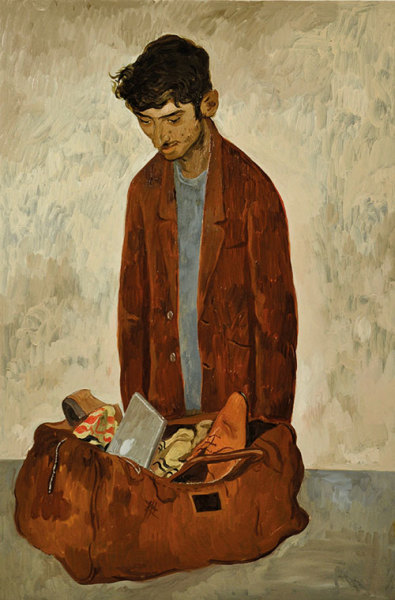
La trama, en dos partes, habla sobre la vida adolescente de un chico Pakistaní, al que su padre parece no perdonarle su extrema sensibilidad y se lo lleva a Abad, su pueblo natal para ser instruido en el negocio familiar que va más allá de solo la agricultura, es ahí cuando nuestro joven héroe, Fahad conoce Ali, el hijo que su padre siempre deseo tener, un joven grande, fornido, hábil el relacionarse con otras personas, todo lo que parece que Fahad no es, por lo que el padre hará que ambos chicos pasen mucho tiempo juntos, es ahí cuando Fahad comienza a descubrir la dinámica que la sociedad de Abad tiene en asuntos políticos y sociales, los convencionalismos no se hacen esperar así como las típicas preguntas que se hacen en una sociedad como lo es la Desi ante las relacionen entre hombres. Esto se puede ver en como Fahad, un crítico de Absolutamente todo, mira la relación que tiene Mousey, su primo con su "Administrador de Fincas", la relación de su padre con sus empleados y la que después de desarrolla entre Fahad y Ali.
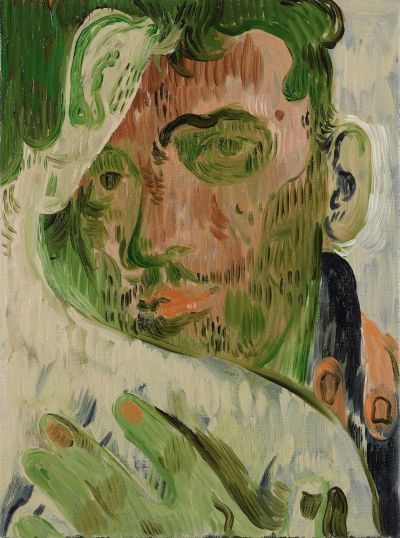
Sin dar demasiados detalles la relación de estos jóvenes no resulta tan importante hasta este momento más que la de la expresión que el ímpetu adolescente ofrece, lo que es importante es el sentimiento de culpa que este hecho mueve todo en Fahad.
La segunda parte de esta historia se desarrolla con un Fahad adulto y exitoso con una pareja en Inglaterra de donde es llamado para llevar a cabo los negocios por los que había sido instruido, es a su regreso donde ve que nada de su pasado había permanecido igual, su casa familiar derrumbándose pedazo a pedazo, el pueblo que amo alguna vez a su familia ahora los consideraban políticamente inútiles e incluso la salud mental de su padre ahora había mermado en ella figura del padre duro que alguna vez lo crio, sin nadie más a quien recurrir se da cuenta ahora él es quien debe estar a cargo, encontradose que algo más había cambiado, que Ali fue en algún momento el enemigo político de su familia y la razón por la que todo había cambiado, Pues parece que Ali es el único con las bolas para cambiar algo de lo que estaba mal, pero sin los recursos para llevarlo a cabo, señalándole a Fahad todos sus privilegios.
Es importante resaltar lo que para mí fue la idea central de la novela "Las relaciones", y va más allá de la historia de Fahad y Ali, es la relación que tenía Fahad con todos a su alrededor, con su padre y su necesidad de decirse a si mismo lo diferente que era de él llegando al punto de cometer errores solo por alejarse de esa idea; su relación con su madre sobreprotectora con la que al final del libro en una sola frase le lanza a Fahad toda su mierda y aun así parece ser el único personaje lo conoce de verdad; su relación con Ali, esa amistad que había crecido para convertirse en un amor que se instauró en el corazón de Fahad dejándole una huella que el mismo no sabe cómo definir; la relación que Fahad tenía con su primo y lo mucho que intentaba no ser relacionado por los mismos aspectos, pero más importante, la relación entre Fahad y la figura que representaba ese primo como aquel chico claramente homosexual, que vivía con su pareja, siendo enemigo político de su propio tío, el padre de Fahad.
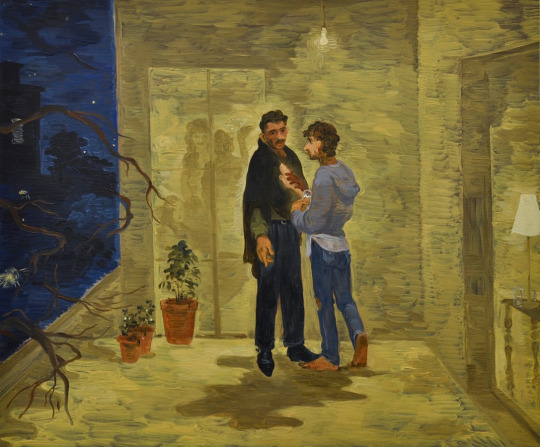
Pero es la relación que tiene Fahad con su propia cultura lo que resulta fascinante, Fahad, como ya lo mencioné es un crítico, habla de cómo todo a su al rededor se mueve tan rápido que no parece poder ni querer participar, la sociedad de Abad sabe lo que está mal en el mundo, sabe que tiene el poder y recurso humano para cambiarlo y aun así no quiere hacerlo porque ya se acostumbró a su forma de moverse, la corrupción, la política, etc. Y aun así se sabe perteneciente, aun a regañadientes, de esta sociedad, detesta que la sociedad no le permita expresarse así mismo o su homosexualidad, pero parece aprovecharse y disfrutar del rechazo que sufre su primo, odia todo lo que tiene que ver con Política en Abad, pero con rapidez aprende como y con quien podría dirigirse en caso de necesitarlo, Odia tener que ser el hijo del dueño con sus responsabilidades, decisiones y hasta parece encontrar la forma de quejarse todo el tiempo de los privilegios que ser el hijo del dueño le trae. Todo eso Hace de "Otros Nombres Para El Amor" un libro fascinante.
Entonces, ¿Por qué lo hace candidato a ser un libro prohibido?

Primero, ¿Qué demonios es un libro prohibido?, Pues básicamente son libros que han sido vetados o censurados por su contenido polémico o "Inadecuado" por alguna institución, la iglesia católica, la Derecha política u otros sectores de la población que parecen tener problemas con el progreso son quienes en estos tiempos parecen tener una cruzada reprobable contra libros que podrían hacernos avanzar como sociedad en asuntos que en pleno años 2023 ya no se deberían discutir, tal el caso de la Derecha en Estados Unidos que ha declarado "Orlando" de Virginia Woolf como un libro inadecuado.
¿Bajo esos términos, Otros Nombres Para El amor debería ser un libro prohibido?, La respuesta rápida es Ningún puñetero libro debería prohibirse, Si "After" de Anna Todd es leída por millones de niñas en el mundo y es una epopeya de la toxicidad de las relaciones, ¿por qué deberían prohibir otros libros que hablen sobre derechos civiles?
Es lo que esta obra representa en una sociedad como lo es la Desi que lo hace un candidato excelente.

Vemos en la obra de Taymour Soomro la crítica no solo a la sociedad Pakistaní, tampoco a las relaciones entre personajes, es una crítica completa a la personalidad del hijo de la Diáspora, Fahad es un personaje complejo, todo aspecto de él desea renunciar a ser llamado Pakistaní, busca estudiar en Londres, Busca un novio Europeo, Busca vivir en una sociedad que sabe que no es la suya, pero siempre se verá obligado a regresar a su lugar de origen, en él recae la frase "saca al chico del pueblo pero no al pueblo del chico", naturalmente esta situación parece ser ignorada por Fahad hasta que en las últimas páginas del libro en una conversación con su madre se dicen lo que para mí es una de las frases más importantes de la literatura Desi LGBTIQAP+ en la actualidad:
-Puedes traerte a quien tu quieras, si tienes un amigo o alguien con quien vivas, tretelo. Que mas nos da a nosotros? siempre has creido que nosotros te rechazamos, que nos parece mal todo o que haces.
-Incluso aunque fuera yo- le respondió Fahad a su madre- Incluso aunque me rechazara a mí mismo. No soy así por que sí. De algún lado me ha tenido que venir. Incluso aunque fuera yo.
Entonces se preguntó si aquel verano lo habían descubierto en aquella arboleda o si tan solo se había descubierto a si mismo.
Es ahí cuando Fahad se da cuenta que todo lo que durante su vida había dirigido sus pasos era un prejuicio y solo estaba en su cabeza, que al igual que la sociedad de Abad, sabia la problemática, sabía que tenía el poder de cambiarlo, simplemente su vida era sencilla dentro de esa infelicidad que a si mismo se impuso.
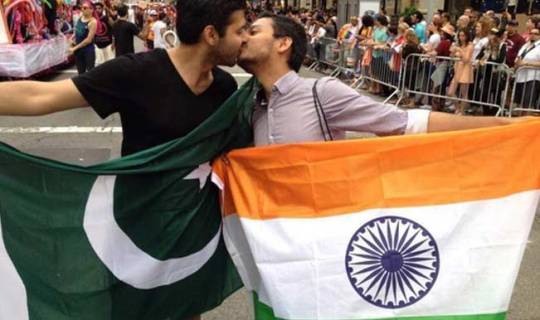
Claramente la sociedad Desi tiene una problemática de Machismo y Patriarcado demasiado arraigado por lo que Otros Nombres Para El Amor es una crítica al principio de la sociedad y después centrada en el individuo, en este individuo pesimista y resentido por no ser escuchado, pero que jamás hace algo por alzar la voz, algo que a cualquier hijo de la diáspora, seas o no de la comunidad LGBTIQAP+, nos toca una fibra sensible, porque es más fácil culpar a nuestra crianza, o nuestros pueblos natales, o nuestra familia.
Claramente no todas las personas entran dentro de esta descripción, pero Taymour Soomro se encarga de entablar una conversación con lo que, si lo hacen, los mueve primero con esta idea de romance Desi, después señalando la hipocresía de Fahad a con su primo, y al final con la dura crítica de "Todos los prejuicios en tu cabeza son solo eso, prejuicios que estuvieron en tu cabeza" y como hijo de la diáspora es difícil escucharlo.
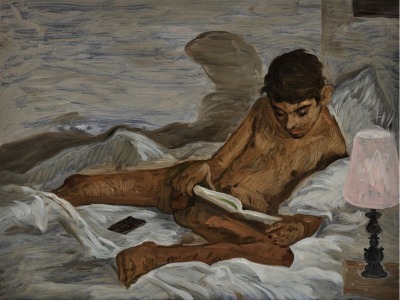
Es sencillo sentirse identificado con Fahad, un padre con el solo interés de proveer, una madre amorosa y algo impertinente, una familia centrada en las responsabilidades de cada miembro, tradiciones y costumbres arraigadas a la religión, una comunidad siempre cercana y dispuesta pero que aún le da tiempo de decirse unos a otros "Oc��pate de tus propios asuntos". Pero el rasgo más importante a resaltar el sentido de Pertenencia-Impertenencia de Fahad, que desea ser Británico, pero es demasiado Pakistaní para esa mayoría y que evoca de nuevo la sensación popular entre los hijos de la diáspora, esa de "No lo suficiente Occidental para los Occidentales y no lo suficientemente Desi para los Desi".
Criticar a la sociedad y al individuo no es una tarea sencilla, pero Taymour Soomro lo logra de forma magistral, te lleva al calor húmedo de Abad o al ruidoso Karachi, te hace enojar con cada comentario del padre o te hace celebrar con Fahad el primer beso, todo de una forma sutil que te hace recordar lo bello de tus raíces.
Espero próximamente tener la oportunidad de leer más de este autor, mientras tanto les dejo esta reseña sobre este, que, para mí es el libro favorito del año.
#pakistani art#desi boy#desiblr#desi culture#lgbtq#Taymour Soomro#salman toor#otros nombres para el amor#other names for love#literatura#libros#escritura#crtitica#muslim gay
2 notes
·
View notes
Text
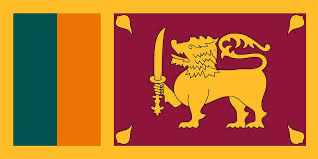
I arrived in India earlier today, but really thought I should write something about Sri Lanka it’s history and also the Civil War.
Sri Lanka is beautiful and has amazing beaches, fantastic temples and the people are (generally) wonderful. It does however have a bit of a bloody history and the worst bits are really quite recent.
Sri Lanka is home to over 20 million people and has a long history. The two largest ethnic groups are Sinhalese (mainly Buddhist) and the Tamils (mainly Hindu). The Sinhalese make up 75% of the population and the Tamils around 15%, Wikipedia says there are also 9% Sri Lankan Moors.
Sri Lanka can trace back their history around 3,000 years, of course there will be a longer undocumented history and there is evidence of human settlements from 125,000 years ago.
The Sinhalese Kingdoms existed from at least 543 BCE until the British took over in 1815. There were other Kingdoms that coexisted at times including the Jaffna Kingdom 1215-1624 and the Vanni Chiefdoms from the 12th century to 1803 and, of course the Portuguese 1597-1658 and Dutch 1640-1796.
The location of Sri Lanka meant it was a huge prize to the Europeans who wanted to take advantage of the historic trading routes and ‘Maritime Silk Road’ for spices and of course tea!
I have previously touched on the Portuguese, Dutch and British rivalries in previous posts (mainly about forts). The Brits arrived in 1815 taking over the Dutch Forts and Ports.
The Sinhalese Kingdom shrunk during the time and the capital moved a number of times, I managed to visit most of the previous capitals including Anuradhapura and Kandy as well as Jaffna (capital of the Jaffna Kingdom) and Colombo (capital for the British and modern Sri Lanka until 1982).
In 1948 Sri Lanka, then Ceylon gained it’s Independence as a dominion and a Republic in 1972 (when the name change took place).
In 1982 a bloody Civil War between the (Sinhalese) Government and the Tamil Tigers (The Liberation Tigers of Tamil Eelam) started and lasted for 26 years ending in 2009.
There are always multiple versions of history and whilst in Sri Lankan I mainly heard that the Tamils were terrorists and all sorts of atrocities were laid at their door (some of which were quite clearly untrue) - and, of course, one person’s terrorist is another’s freedom fighter. Even the UN has been unable to ascertain the full facts (not that I have much time for the UN - but that’s a whole other Mussolini quote!)
What is not in doubt is some of the key facts that started the Civil War. The Government and Sinhalese persecuted the Tamil minority in a number of ways dating back a far as Independence where Sinhalese was recognised as the sole Official Language and the Ceylon Citizenship Act made around 700,000 stateless. There were attacks in 1956, 1958, 1977, the burning down of Jaffna Library in 1981. It was Black July Pogrom in 1983 and the Tamils responding by killing 13 Sri Lankan soldiers that started the actual Civil War.
None of this excuses the killing of innocent civilians (or indeed the armed forces) by the Tamil Tigers, who it is said invented suicide bombings with a number of attacks on religious worshippers over the years. It is believed over 100,000 people (on both sides) died during the Civil War and it is thought to include more than 40,000 civilians.
The Civil War raged for decades and there seems to be have been a number phases (Wikipedia has a good history) and was brought to an end in 2009 with the Government crushed the remaining Tamil Tigers.
One result of the Civil war ending is the north of the island is opening up again. Hopefully the increase in tourism will help provide funds to rebuild from both the Civil War and tsunami.
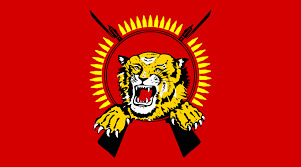
1 note
·
View note
Text
youtube
El Tsunami del Océano Índico: Un Rugido que Cambió el Mundo
El 26 de diciembre de 2004, el mundo fue testigo de uno de los desastres naturales más devastadores de la historia. Un terremoto de magnitud 9.1 en el Océano Índico desató un tsunami con olas de hasta 30 metros, arrasando comunidades en Indonesia, Tailandia, Sri Lanka, India y más. Más de 230,000 vidas se perdieron, pero las historias de resiliencia y aprendizaje aún nos impactan. Descubre cómo este evento cambió la forma en que el mundo enfrenta los desastres naturales. Suscríbete para más historias impactantes y comparte este video para crear conciencia.
Tsunami2004 #DesastreNatural #TerremotoEnSumatra #TsunamiEnElOcéanoÍndico #TragediasHistóricas #Supervivencia #ResilienciaHumana #AlertaDeTsunamis #HistoriaDeTsunamis #OlasGigantes #TerremotosMortales #CatástrofesNaturales #PoderDelOcéano #SriLankaTsunami #TailandiaTsunami #PrevenciónDeDesastres
#tsunami 2004#desastre natural#terremoto en Sumatra#tsunami en el océano Índico#tragedias históricas#supervivencia#resiliencia humana#alerta de tsunamis#historia de tsunamis#olas gigantes#terremotos mortales#catástrofes naturales#poder del océano#Sri Lanka tsunami#Tailandia tsunami#prevención de desastres#Youtube
0 notes
Text
Unmasking the Truth: Are Global Reports Like the World Happiness Report Just Propaganda?
The World Happiness Report (WHR) ranks nations on "happiness," influencing policies and perceptions. The 2025 report just dropped, but our investigation at IJ-Reportika reveals it—and other indices—are flawed propaganda tools. Let’s unpack the 2024 rankings and why 2025 follows the same shaky path.
h What’s Wrong with the WHR?
Backed by the UN and Gallup, the WHR uses the Cantril Ladder (rate your life 0-10). Scientific? Not quite. Our exposé (link in bio: https://ij-reportika.com/whats-wrong-with-the-world-happiness-report/) shows:
Tiny Samples: Gallup surveys ~1,000 people per country—0.00014% of India’s 1.4B population! In 2024, just 100,000 across 130 countries.
Excluded Voices: Uyghurs, Rohingyas, and rural Africa ignored. Urban oversampling skews results.
Cultural Bias: Questions like “Do you feel safe at night?” vary by culture, skewing scores.
Flawed Stats: Generosity is barely significant (10% level). Happier people might just see less corruption—not the other way around.
t 2024 Rankings: Absurd Anomalies
Costa Rica (7.0, Rank 12) ties Kuwait (7.0, Rank 13): “Pura Vida” vs. restrictive Kuwait—same happiness?
India (4.1, Rank 126) lags Pakistan (4.7, Rank 108): Growth vs. instability?
Ukraine (4.9, Rank 105) beats Sri Lanka (3.9, Rank 128): War-torn Ukraine over Sri Lanka?
China (6.0, Rank 60) vs. Japan (6.1, Rank 51): Censorship barely trails harmony?
Nordic Bias: Finland dominates (7.736 in 2025), as methodology favors Western models, undercounting Africa and Asia.
The 2025 report (March 19) repeats these flaws—Taiwan as “Taiwan, Province of China” shows geopolitical bias. China ranks high despite repression. It’s propaganda, not happiness. t
p Beyond WHR: Other Flawed Indices
Our investigation (link in bio: https://ij-reportika.com/whats-wrong-with-the-reports/) exposes more:
World Press Freedom Index: Subjective surveys misrepresent India, Singapore.
Corruption Perceptions Index: Ignores private corruption, biases against free press nations.
USCIRF Reports: Geopolitical agenda—China targeted, U.S. allies ignored.
Global Hunger Index: Mislabels health as hunger, outdated data.
s Why It Matters
These reports shape global narratives, but they’re built on shaky data and agendas. Demand transparency! Share your thoughts below and read our full reports at IJ-Reportika (links in bio). #UnmaskTheReports #WorldHappinessReport
Download report ://ij-reportika.com/download/11387/?tmstv=1733816652

#World Happiness Report#Global Indices#USCIRF#Corruption Perception Index#World Press Freedom Index#Corruption#Happiness
0 notes
Text
[ad_1] TalentNomics India, a leading non-profit dedicated to fostering a gender-equitable Universe – Equiverse, is set to host the 9th Global Leadership Conference, titled “Restoring the Equiverse – From Vision to Action”, on March 27, 2025, at Holiday Inn, Aerocity, New Delhi. Bringing together 200+ global and regional leaders, policymakers, corporate executives, and social change-makers, the conference will foster high-impact discussions on practical strategies to restore gender balance across workplaces, economies, and society. With an inspiring lineup of keynote speakers, panel discussions, and research presentations, the event is designed to drive real change—moving beyond dialogue to actionable solutions. Keynote Speakers & Distinguished Guests The conference will feature inspirational keynote addresses from esteemed global leaders: Her Excellency May-Elin Stener, Ambassador of Norway to India and Sri Lanka – The Urgency of Restoring the Equiverse: Bridging Gaps, Empowering Futures Neelam Dhawan, Non-Executive Director, ICICI Bank Limited, Hindustan Unilever Ltd, and others – The Path Forward: Visionary Leadership for Restoring the Equiverse Kanta Singh, Deputy Representative, UN Women India – Valedictory Session: A Collective Commitment to Equity Conference Highlights & Key Panels The conference will delve into some of the most pressing issues surrounding gender equity, focusing on real-world challenges and solutions. The four dynamic panel discussions and sessions include: 1. Reimagining Workplaces – Building Gender-Responsive Employment Practices How organizations can redesign work environments to ensure equity, inclusion, and diverse leadership representation. 2. Financial Empowerment – Bridging the Gender Wealth Gap Exploring systemic barriers, wage gaps, and financial inclusion strategies to support women's economic independence. 3. Allies to Advocates – Transforming the Narrative Around Gender Roles Engaging men, media, and policymakers in the gender equity movement to drive long-term cultural shifts. 4. Policy Interventions – What’s Next for a Gender-Equal Future? A roundtable discussion that will involve all participants to get inputs on policies and frameworks needed to accelerate systemic change at national and organizational levels. There will be an interesting Q&A session, Walking the Talk – Fostering an Equiverse between Kishore Ajwani, Managing Editor, News18 India, and Lavang Khare, Strategic Communications Advisor. This conversation will explore how men and media leaders can champion gender equity at work, at home, and in public discourse—moving beyond narratives to real change. The event will also include the much-anticipated launch of the “4W’s Report: Bridging the Gender Gap in Work, Wealth, Welfare & Well-being,” based on primary and secondary research. The report provides critical insights and specific country based policy recommendations to address persistent inequalities in three South Asian Countries, using Thailand as an anchor country. Agenda Overview 09:00 AM – 09:15 AM | Opening Remarks by Ipsita Kathuria and Paul Linnarz 09:15 AM – 09:50 AM | Keynote Address 1 – Her Excellency May-Elin Stener 09:50 AM – 10:50 AM | Panel 1: Reimagining Workplaces – Gender-Responsive Employment Practices 11:10 AM – 11:40 AM | Walking the Talk: Fostering an Equiverse 11:40 AM – 12:40 PM | Panel 2: Financial Empowerment – Bridging the Gender Wealth Gap 12:40 PM – 01:00 PM | SEWA Sister’s Journey in Bridging the Wealth Gap 01:00 PM – 01:20 PM | 4W’s Report Launch 02:20 PM – 02:50 PM | Keynote Address 2 – Neelam Dhawan 02:50 PM – 04:00 PM | Panel 3: Allies to Advocates – Transforming the Narrative Around Gender Roles 04:00 PM – 05:00 PM | Roundtable: Policy Interventions for a Gender-Equal Future 05:30 PM – 05:50 PM | Valedictory Session – Kanta Singh About TalentNomics India
TalentNomics India is a non-profit organization. By equipping women with the tools to lead and advocate for systemic change, TalentNomics aims to create an Equiverse—a world where gender equity is the norm. The organisation works to bridge gaps, build networks, and drive sustainable change through conferences, research initiatives, and leadership programs. For more details and media registration, visit: www.india.talentnomics.org/annualconference2025 LinkedIn Facebook Instagram Spotify !function(f,b,e,v,n,t,s) if(f.fbq)return;n=f.fbq=function()n.callMethod? n.callMethod.apply(n,arguments):n.queue.push(arguments); if(!f._fbq)f._fbq=n;n.push=n;n.loaded=!0;n.version='2.0'; n.queue=[];t=b.createElement(e);t.async=!0; t.src=v;s=b.getElementsByTagName(e)[0]; s.parentNode.insertBefore(t,s)(window,document,'script', 'https://connect.facebook.net/en_US/fbevents.js'); fbq('init', '311356416665414'); fbq('track', 'PageView'); [ad_2] Source link
0 notes